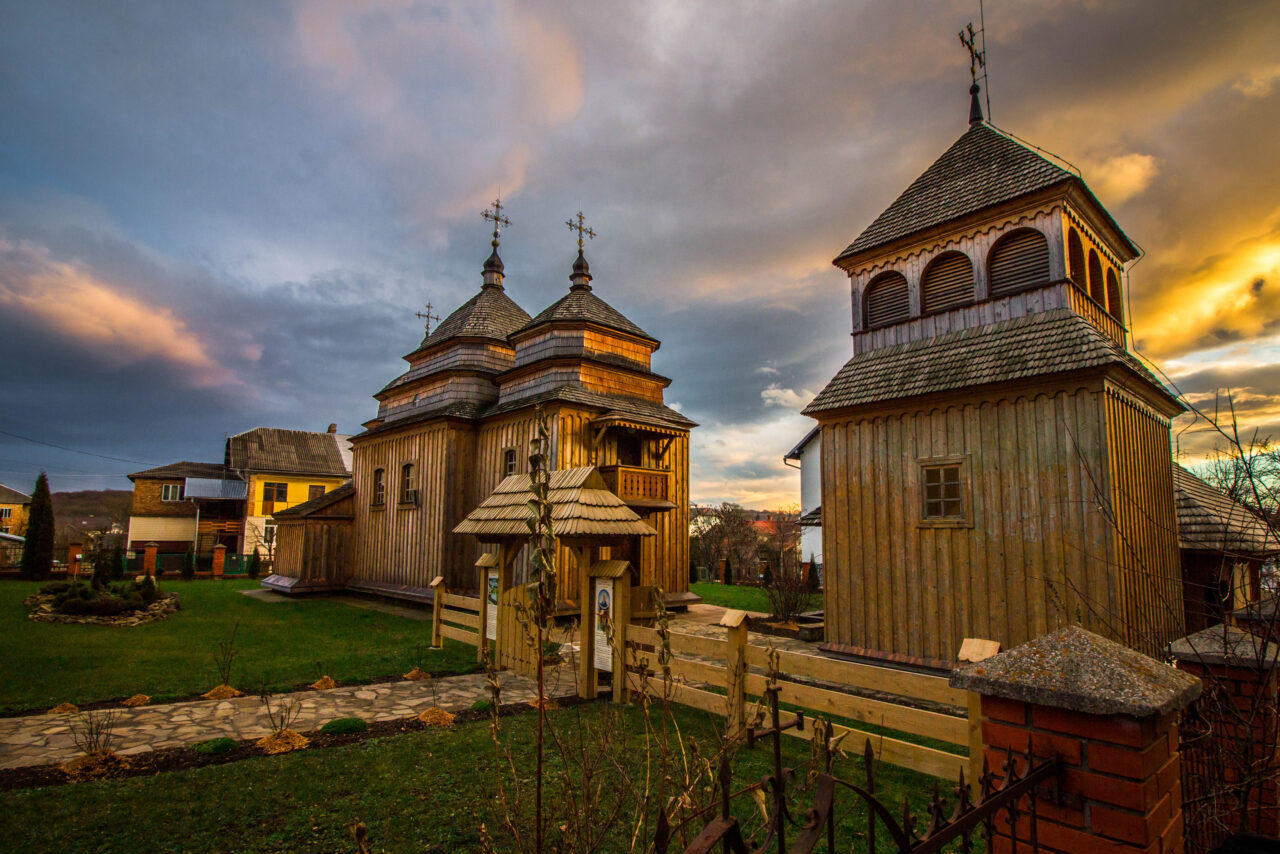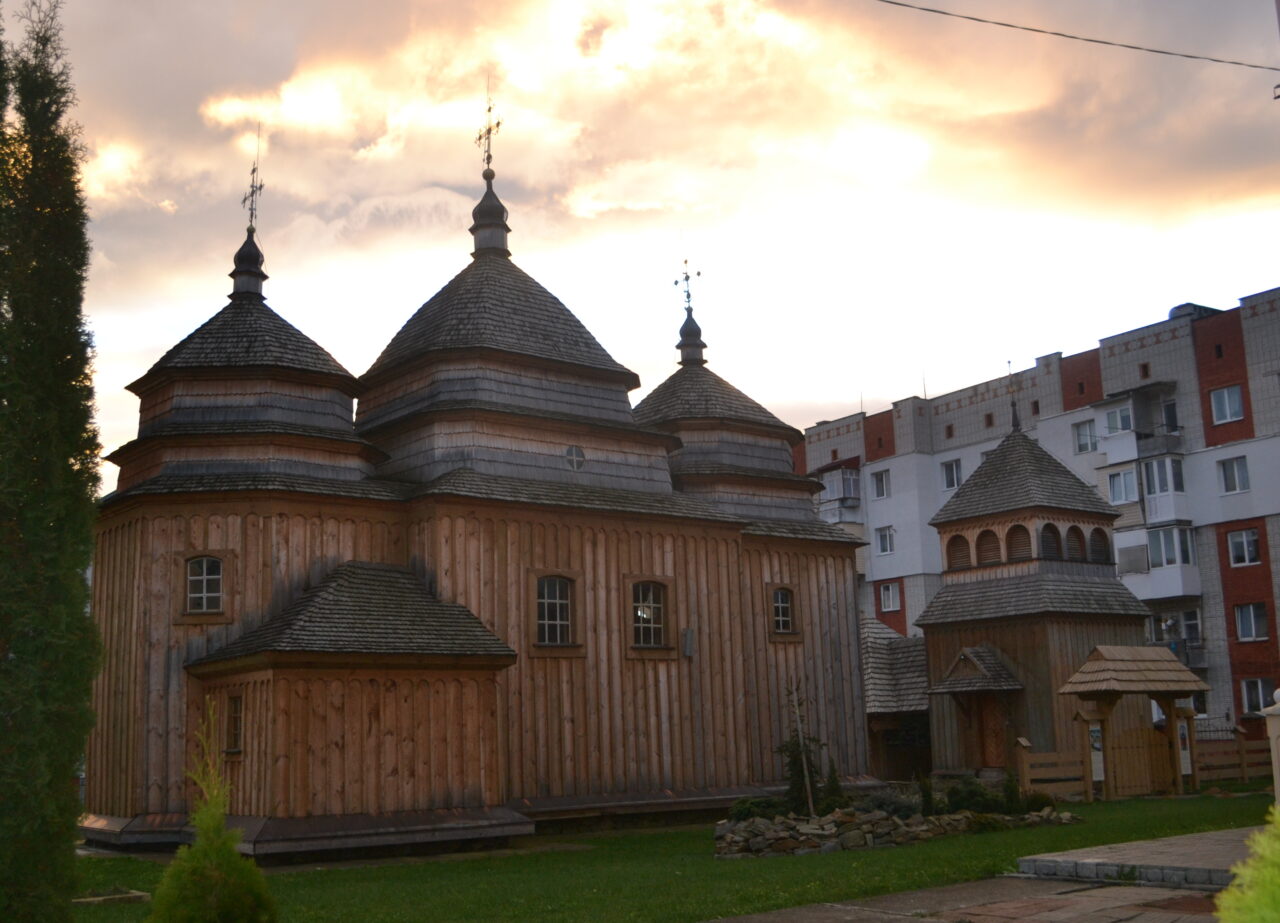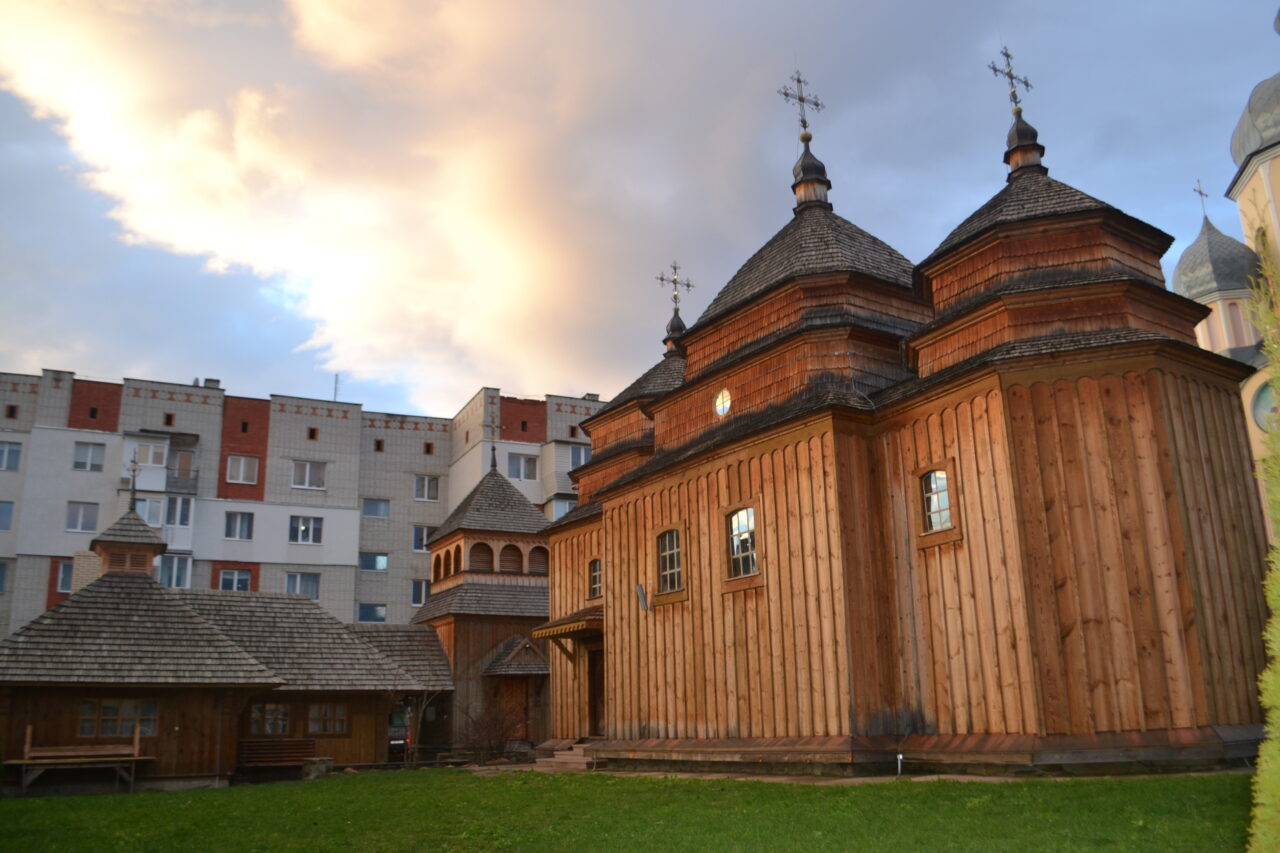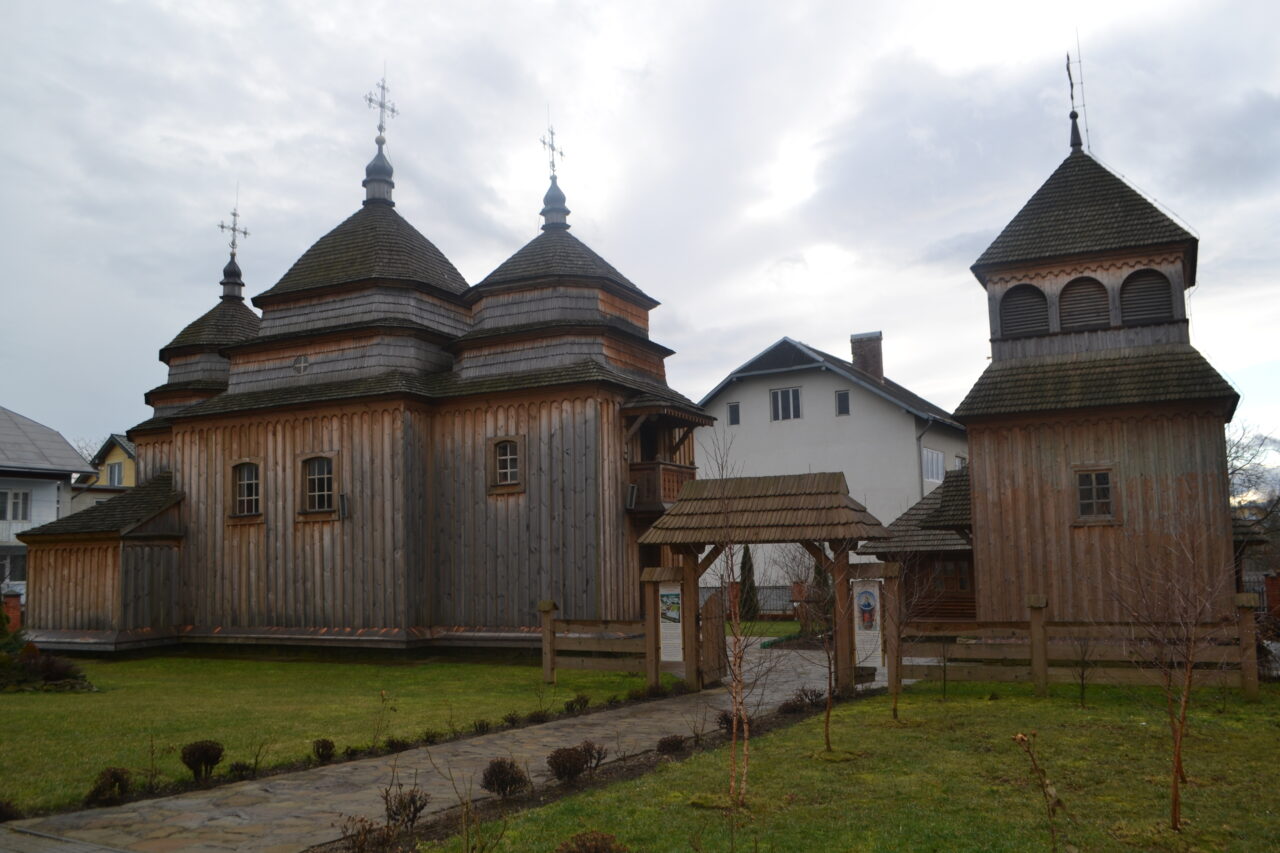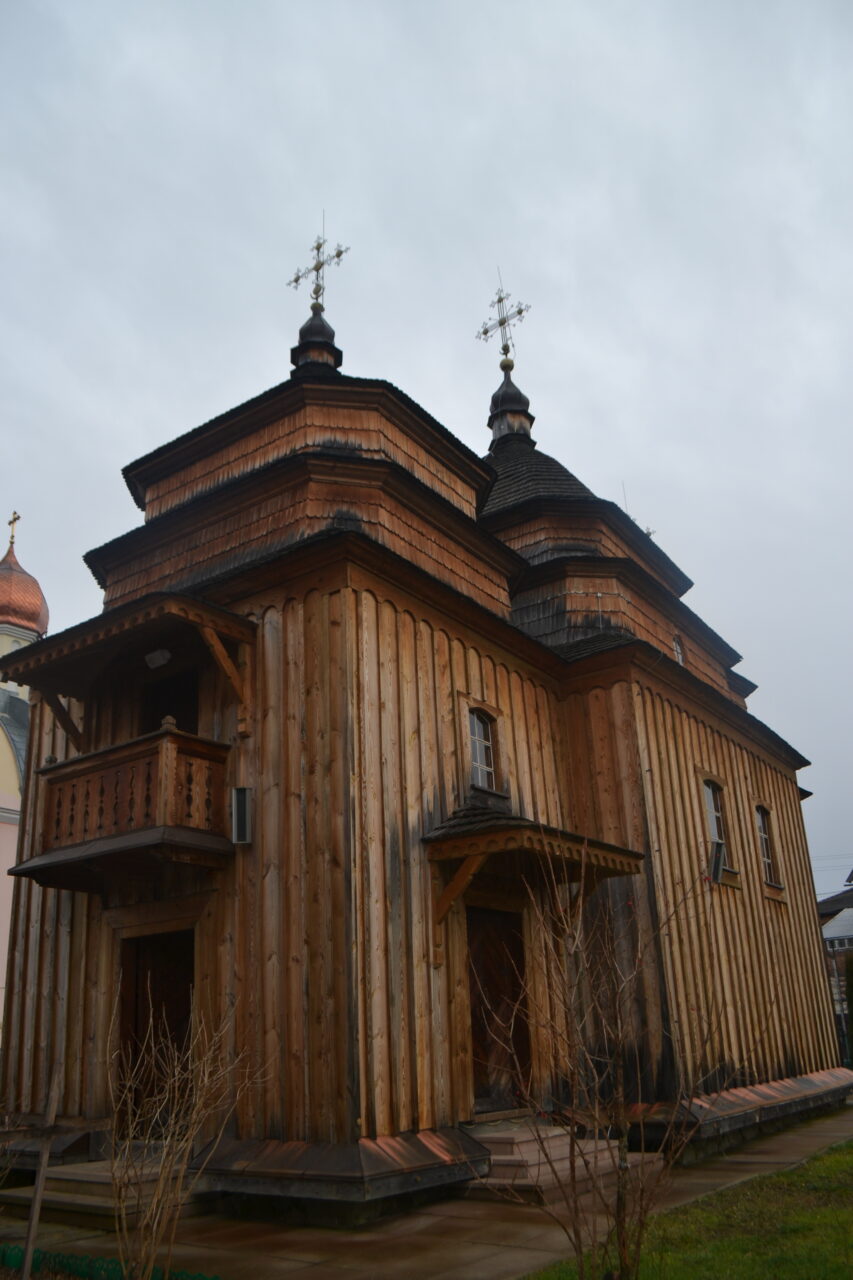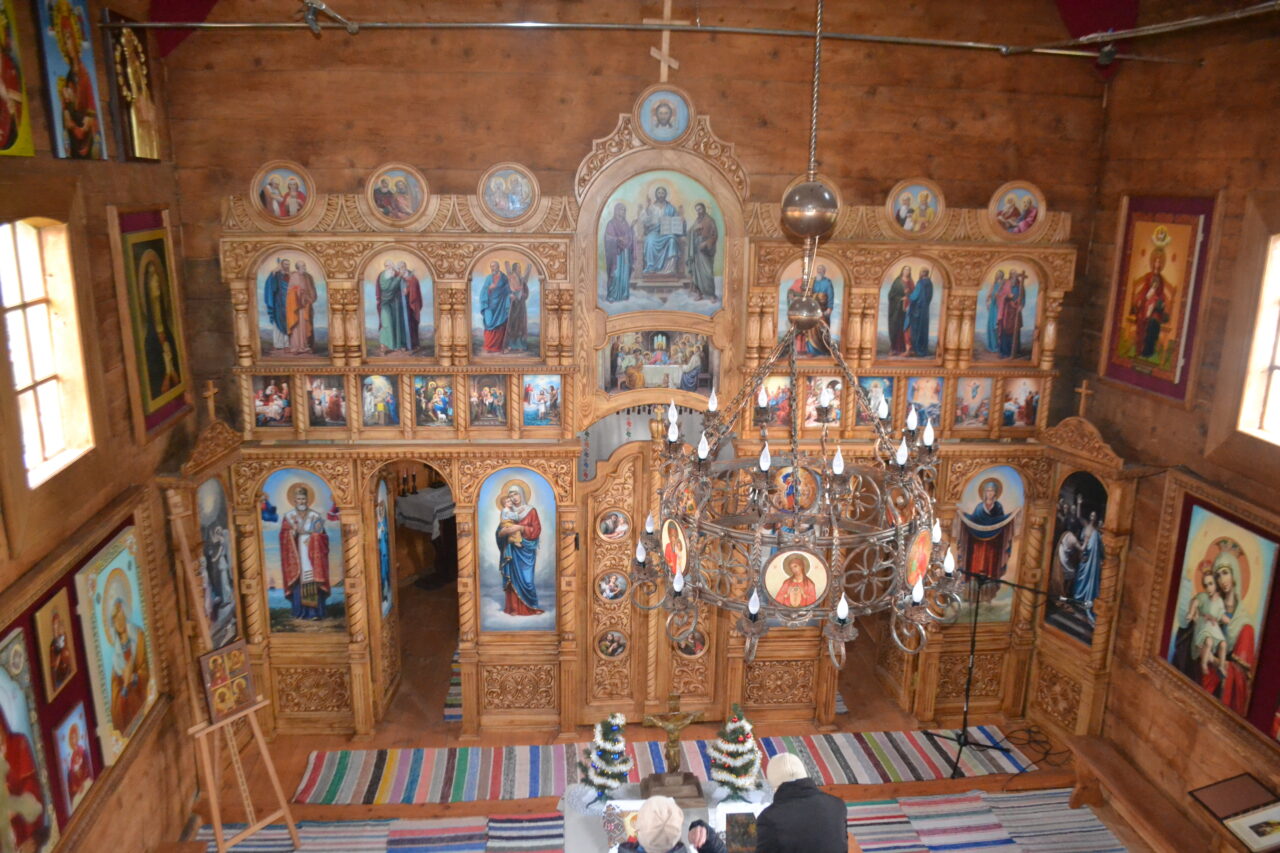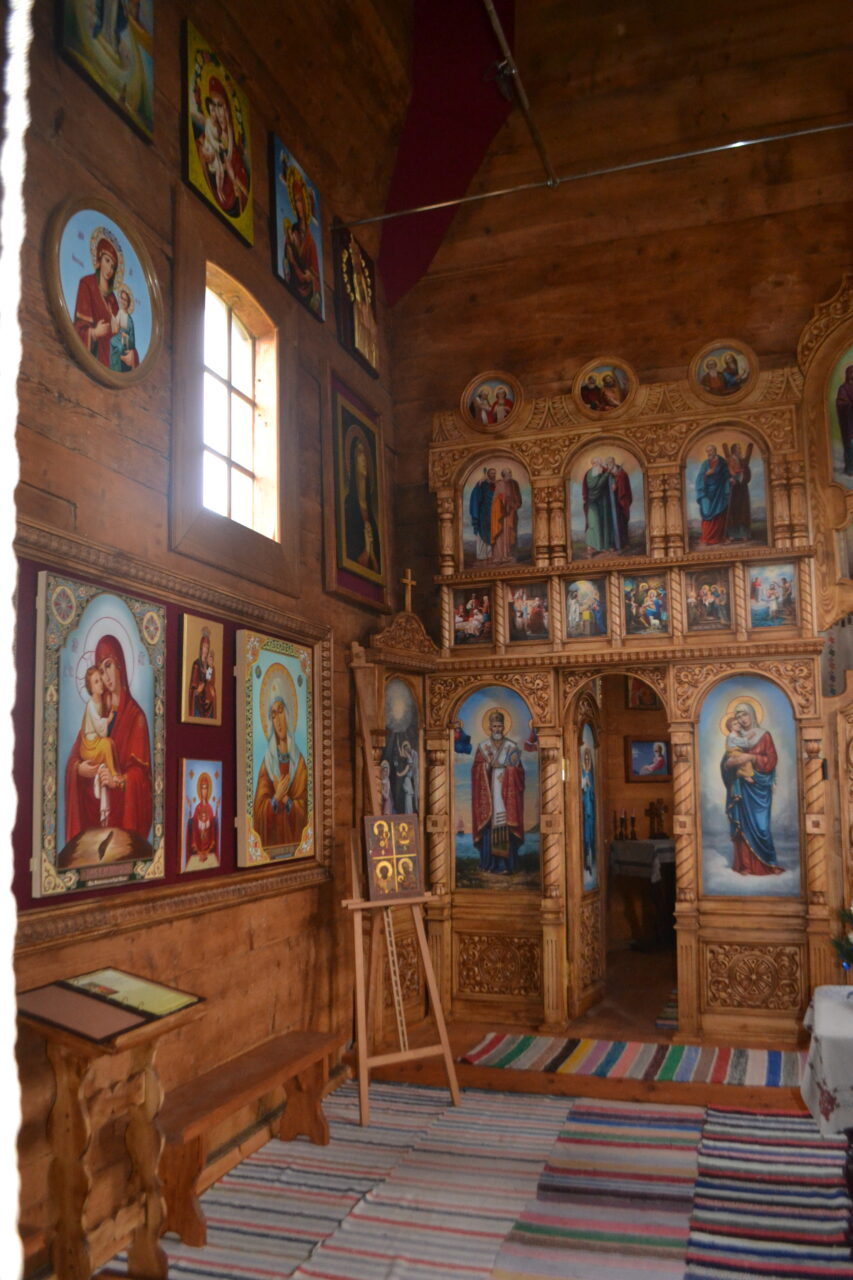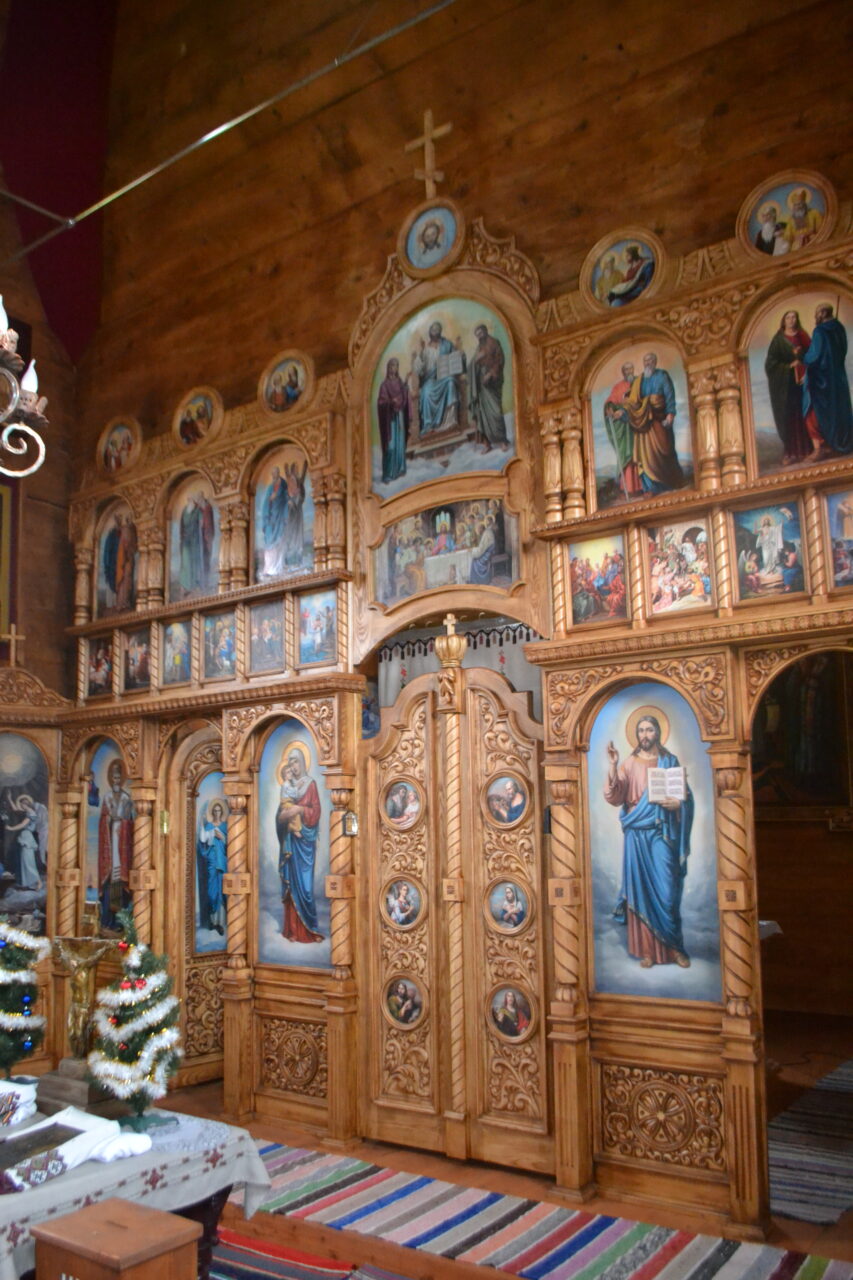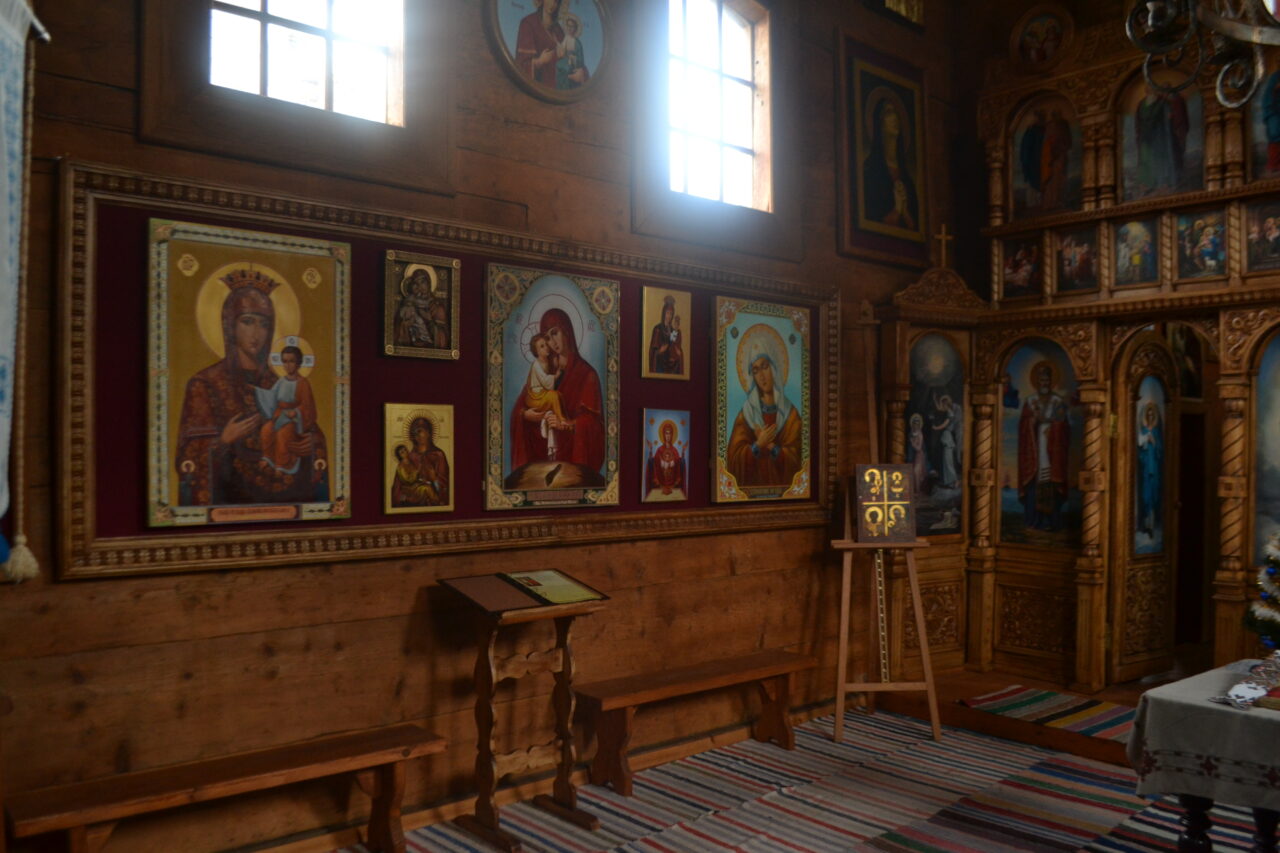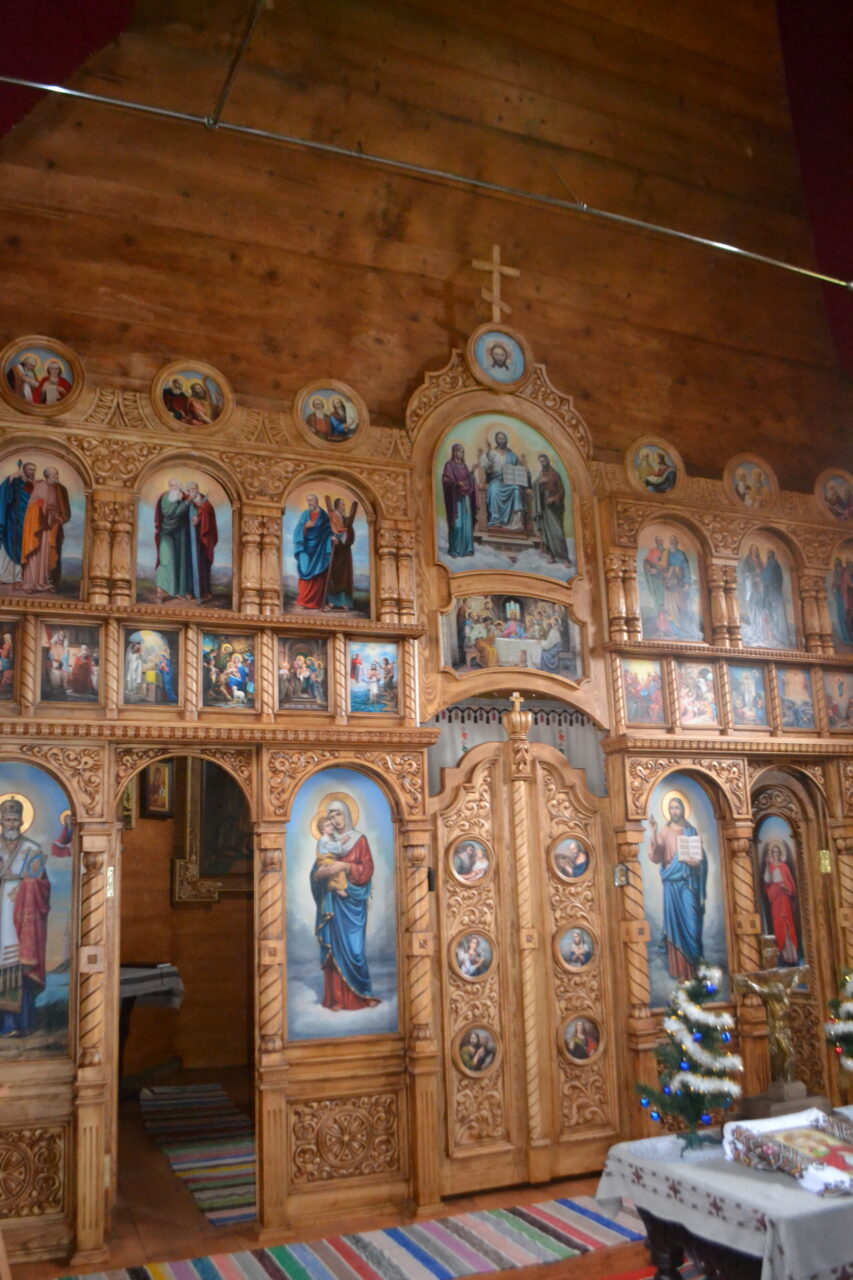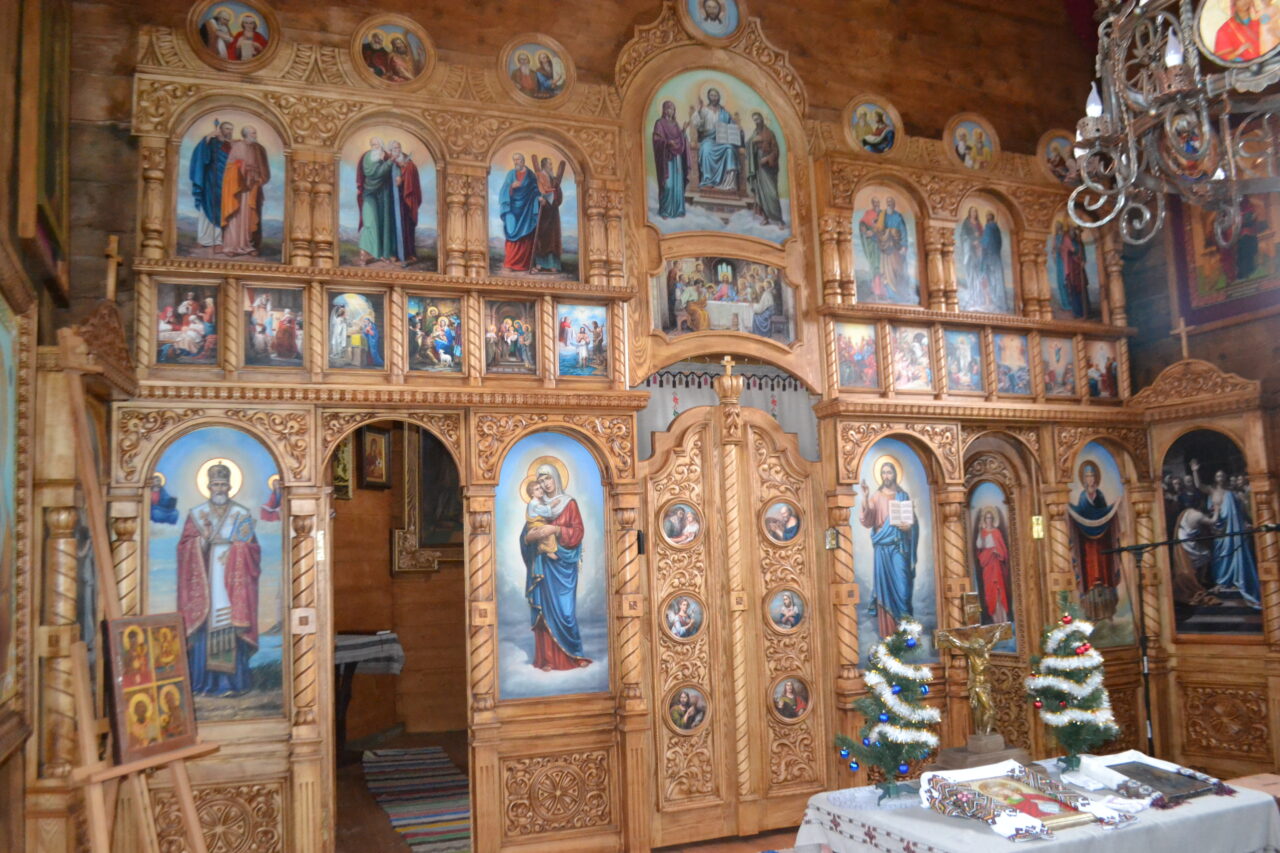The wonderful climate of the Eastern Carpathian Foothills, the healing water from the unique springs, the absence of noisy industrial plants around makes the town of Morshyn a real paradise, a haven for both body and soul. The mineral springs of Morshyn are unique in the Carpathian Foothills, because their water contains mirabilite. This mineral makes it bitter and unsuitable for cooking, but very useful in small doses as medicine for the digestive system. Back in the 19th century, the settlement began to expand and very soon turned into a wonderful resort town. If you want to improve your health, you don’t even have to go to either Karlovy Vary, or Marienbad – just come to Morshyn.
While walking around the town, make sure to turn onto Danylo Halytskyi Street, where next to the new brick church on an elegant well-groomed lawn, as if put on exhibition, sits a splendid, ancient, wooden Church of the Intercession of the Blessed Virgin Mary. In 1817, at the expense of Carl von Seiff, the inheritor of the village of Morshyn, a new, three-domed, three-unit, classical, wooden, Boikos-style church was built on the site of the old church for the Greek Catholic community. The vertical narrow plank siding and the complex rooftop create the illusion that the whole building is striving for heaven. Its sides are crowned with octagonal layered roofs with lanterns and wrought iron crosses on top. Like in the old times, the layered roof is covered with wood shingles.
This church is characterized by a complete correspondence between the internal space and the external form; it has no primary and secondary facades. The church was created with the expectation that it’d be viewed from all sides. The altar area of the temple has a complex hexagonal shape and is attached to the sacristy on the north side.
The square central nave is the largest. It’s also best lit, since it has two north-facing windows, two south ones, and an interesting round window (ox-eye window) at the first bend. From the choir area you can access the higher porch (balcony), which is located above the entrance – on the west wall of the gynecium. In Ukrainian sacred wooden buildings, doors were never made high because they were supposed to symbolize the gates of salvation. Here, too, the ancient doors are heavy, decorated with vertical planks, hanging on long hinges. The church was damaged during World War I, and, in 1920, the community commissioned the first thorough restoration; that’s when the balcony above the main entrance disappeared, the floor was replaced, and the shingle roof was not unreasonably renewed. Today, the floor of the whole church is boarded, whereas before this restoration, the floor of the nave and gynecium was covered with burnt bricks, and only the altar and the sacristy had fir flooring.
From the outside, the fir logs are vertically clad in boards with cover strips, which are locked in arches up above, making the whole building look as light as lace. However, this decorative element is new; it appeared only after the last restoration in 2009-2011. The oak posts were once surrounded by a wooden ambulatory covered with wood shingles, but today there are copper sheets instead.
To the east of the church, there’s a magnificent two-tier tower – the bell tower. The arcade on the upped level makes it look militant and defensive. It’s especially functional, but its simplicity is what enhances the clear contours of the temple. The bell tower was severely damaged in a fire in 2003, so today there’s a new frame structure, which is as similar as possible to the original. Since 2015, the bell tower is adjacent to Sophia Spiritual Educational Center, where local youth study Christian ethics and spend their leisure time. Make sure to pay attention to the old bell next to the bell tower and the inscription on it: “The founders of this bell are Stas and Ruzia Derkach – the nobles of Morshyn of Stryi powiat in 1928.” A precious imprint of honorable people!
There have been different stages in the history of this church. It was built for the Greek Catholic community of Morshyn, but after World War II and until the 196os it was used by the Orthodox. At the time, the church was officially closed, but it continued to be secretly operated by priests and people were coming to it too. In 1982, the church property was transferred by the authorities to the Stryi Local Lore Museum “Verkhovyna” for safekeeping, and an exhibition of the Stryi district goods was arranged in the church. But that period was over too… Since 1989, you could again hear people praying to God here, but the main sacred object – the icon of the Virgin Mary wearing a crown and holding the Christ Child in her arms – hasn’t returned here. Since 2018, the Museum of the Icons of the Blessed Virgin Mary has been operating within the walls of the church and, among other 50 glorious sacred images, the choir area houses icons from the old church too. And the first tier of the bell tower is exhibiting ancient clothing and embroidered towels.
Viewing the church from all sides, a small white tombstone might catch your eye. There used to be a cemetery near the church, and as of today, only the grave of the church’s founder has been preserved.
The 18th century wooden Church of the Intercession of the Blessed Virgin Mary is the monument of wooden architecture of local significance.

